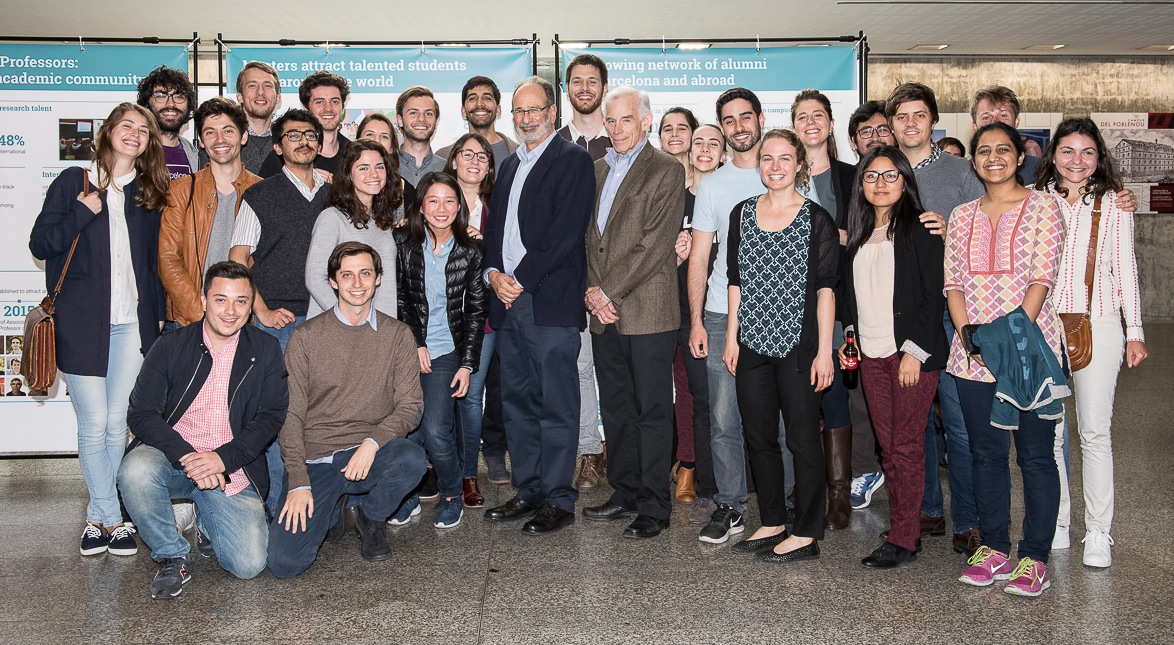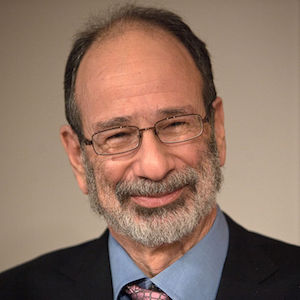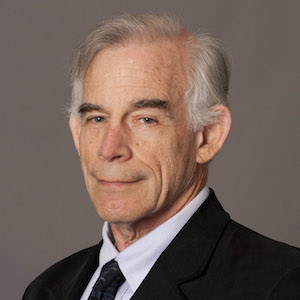
This is the second of two posts reporting on the roundtable discussion that took place on Friday, 31 March as part of the BGSE’s 10th Anniversary Celebrations. The first post focused on the contributions of the first three speakers, Prof. Richard Blundell, Prof. Matthew Jackson and Prof. Anne Krueger. This post discusses the contributions of the last two speakers, Prof. Alvin Roth (Nobel Laureate 2012) and Prof. Christopher A. Sims (Nobel Laureate 2011) on “The Practical Influence of Economic Research”.
Prof. Alvin Roth, Stanford University
P rof. Roth began by talking about the practical influence of his own research on matching markets. As Prof. Roth explained, these are markets where prices do not succeed in bringing the demand side and supply side of the market together. For example, while in a commodity market the price determines who will produce the good (those firms that can make profits at the given price) and to whom they will sell it (those with a willingness to pay greater than the price), the same cannot be said for the placement of students in public schools or the placement of new doctors in their first hospital.
rof. Roth began by talking about the practical influence of his own research on matching markets. As Prof. Roth explained, these are markets where prices do not succeed in bringing the demand side and supply side of the market together. For example, while in a commodity market the price determines who will produce the good (those firms that can make profits at the given price) and to whom they will sell it (those with a willingness to pay greater than the price), the same cannot be said for the placement of students in public schools or the placement of new doctors in their first hospital.
Prof. Roth set out how economists’ research in matching markets played a crucial role in the design of more efficient school assignment systems. One problem in assigning learners to public schools, for example, is that parents may be incentivised not to list their first choice of school at the top of the list they submit to the relevant education authority, because they believe that their children’s chances of being assigned to the first choice is slim, and so they list their second or third choice at the top. However, in order to assign children to schools efficiently, the authority needs to know what parents’ true preferences are, and in this case economists can help to design the market such that parents have an incentive to reveal their true preferences.
Similarly, the college admissions process typically involves some congestion, since prospective students typically apply to many colleges, but only accept a place in one college. This means colleges are faced with repeated rounds of admission decisions once they are informed that students who were accepted will not take up their places. A more efficient system would have prospective students submit their preferences over all colleges in advance, and are then placed in a single round using a central assignment mechanism.
Aside from designing more efficient matching markets, Prof. Roth also believes that economists can play an important role in gathering or producing evidence for the policy changes they advocate. As an example, Prof. Roth mentioned economic experiments undertaken in the United States (US), which convinced US policymakers to adopt a new mechanism for assigning new doctors to their first hospital, whereas those policymakers used to be reluctant to accept these theoretical arguments or experimental evidence from other countries.
Finally, Prof. Roth also voiced support for Esther Duflo’s view that economists have an important role to play as “plumbers”. This involves analysing and finding solutions for the ways in which markets do not perform well, due to some unforeseen practical obstacles not accounted for in the relevant economic model. In this respect, Prof. Roth talked about economists’ design of a matching market for kidney donors. Often friends or family members are unable to donate a kidney to a patient due to incompatibility of the donor and recipient, but this problem could be solved through a cross-matching mechanism whereby a donor-recipient pair is matched with another donor-recipient-pair in order to achieve compatibility.
However, in practice doctors often end up rejecting such matches for medical reasons in unforeseen ways. Economists designing this market are therefore faced with a practical problem to solve, namely how to elicit doctors’ preferences in such a way that once a kidney is matched to a patient, the doctor does not ultimately reject the organ for the operation.
Prof. Christopher A. Sims, Princeton University
Prof. Sims’ con tribution was concerned with developments in his own field of monetary policy, including the 2008/2009 financial crisis, and he began by pointing out that many central bank employees (including the heads of central banks) graduated with PhDs in economics, and therefore economics is certain to have a practical influence on monetary policy. In this respect, Prof. Sims believes that the effects of the financial crisis would have been far more serious if Ben Bernanke (and other policymakers) had not relied on the lessons of the Great Recession of the 1930s in implementing dramatically expansionary policies in response to the crisis.
tribution was concerned with developments in his own field of monetary policy, including the 2008/2009 financial crisis, and he began by pointing out that many central bank employees (including the heads of central banks) graduated with PhDs in economics, and therefore economics is certain to have a practical influence on monetary policy. In this respect, Prof. Sims believes that the effects of the financial crisis would have been far more serious if Ben Bernanke (and other policymakers) had not relied on the lessons of the Great Recession of the 1930s in implementing dramatically expansionary policies in response to the crisis.
In order to provide further context for his discussion of the financial crisis and the policy response in the United States, Prof. Sims noted that the policy prescriptions of monetarism had been a mistake, and that instead of aiming only at a constant growth rate of money, monetary policy should use interest rates as a tool to smooth fluctuations in economic activity. According to Prof. Sims, this shift in focus did indeed result in increased stability in the period leading up to the financial crisis.
Nevertheless, the overwhelming majority of economists, and in particular those in charge of monetary policy, did not predict the financial crisis, and the question has been asked why they were not able to do so. However, according to Prof. Sims, the role of economists in this instance can be compared to that of seismologists. In the same way that seismologists cannot predict earthquakes, but can only analyse them and provide very broad guidelines on when they might be likely to occur, recessions are inherently unpredictable, and economists should not be expected to predict them in advance.
A further question addressed by Prof. Sims is why the Fed chose to keep interests rates so low in the years leading up to the financial crisis. According to Prof. Sims, the Fed did have a rationale in adopting this policy, namely that it recognised the risks of falling into the kind of trap experienced by Japan since the 1990s, where the economy experiences low growth and the central bank is unable to provide monetary stimulus due to the zero lower bound on the interest rate. Nevertheless, it remains an open question whether the Fed should have better weighed these risks against the risk of creating a crisis through an extended period of low interest rates.
A further interesting possibility raised by Prof. Sims, although he did not address it conclusively, is whether the post-monetarist stability leading up to the crisis paradoxically served to increase its severity. Here Prof. Sims again used an earthquake metaphor: if engineers design structures that are more resistant to earthquakes, this could allow a society both to construct more buildings, and to construct taller buildings that hold more people. In this way the original technology designed to protect the society against earthquakes could increase the expected damage of a very serious earthquake. In the same way, increased economic stability could have contributed to the deregulation and expansion of the financial sector which amplified the effects of the financial crisis.
Ultimately Prof. Sims expressed the view that economics as a field cannot carry the blame for an event such as the financial crisis. Which monetary policy is appropriate at a given moment is a hard problem, and economists should not carry the blame for attempting to tackle such problems, which are important to analyse, even if they are not completely successful in solving them.
